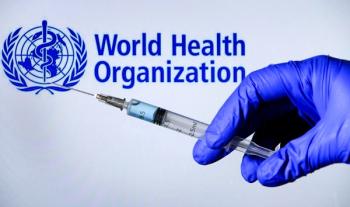
Erysipelas in a Middle-Aged Woman
A middle-aged woman reports that for several days she has hada facial rash, some mild facial discomfort, and a low-grade fever. She deniesprevious illness, recent contacts with infected persons, or history of a similarrash.
THE CASE: A middle-aged woman reports that for several days she has hada facial rash, some mild facial discomfort, and a low-grade fever. She deniesprevious illness, recent contacts with infected persons, or history of a similarrash.
What is the most likely diagnosis?
- Contact dermatitis.
- Urticaria.
- Erysipelas.
- Necrotizing fasciitis.
- Cellulitis.
DISCUSSION: This patient haserysipelas, an infectious disease thatcan usually be diagnosed based onthe history and physical examination.The infectious agents usually responsiblefor erysipelas are group A β-hemolytic streptococci and, less frequently,Staphylococcus aureus. Otherstreptococcal groups are occasionallyimplicated. Although similar in appearanceto cellulitis, with which it isoften confused, erysipelas is a moresuperficial infection. It is moresharply demarcated from adjacentnormal skin than cellulitis and is characterizedby induration and intenseerythema (Figure 1). Erysipelas occursprimarily in adults and is generallybenign; however, it may be fatalwhen associated with bacteremia in avery young, elderly, or immunocompromisedpatient.
Figure 1
Figure 2
Patients usually report an abruptonset of illness with fever and chills,followed by a painful rash 1 to 2 dayslater; some complain of muscle andjoint discomfort. Depending on theextent of infection, patients may appearwell or ill. Erysipelas is found inthe lower extremities in 70% to 80% of cases (Figure 2); facial involvementoccurs in 5% to 20%.
The erythema is typically irregular,with extensions that may followlymphatic channels. Lymphangitisand secondary desquamation, vesicles,and lymphadenopathy may bepresent. Defects in the skin barrierfollowing trauma, abrasions, skin ulcers,insect bites, eczema, and psoriaticlesions may predispose to infection.Other predisposing factors includeimmunocompromised status,arterial venous insufficiency, pareticlimbs, saphenous vein grafting in thelower extremities, and lymphatic obstructionor edema.
The diagnosis of erysipelas ismade clinically. Laboratory tests are oflittle value. Blood cultures may be ofsome value in patients with prostheticheart valves or other intravascular devicesor artificial joints and in thosewho are immunocompromised or appearill.
Treatment. Because of the potentiallyrapid progression of the disease,prompt initiation of therapy iscrucial. Measures such as hydration,symptomatic treatment of aches andfever, and the application of coldcompresses are recommended. Antibioticchoices include penicillin G,erythromycin, penicillin V potassium,or cephalexin. Hospital admissionis recommended for patientswith serious underlying disease andthose who appear acutely ill.
FOR MORE INFORMATION:
- Schneiderman H. Erysipelas. Consultant. 1998;38:2195-2199.
- Schwartz MN. Erysipelas. In: Mandell GL, DouglasR, Bennett JE, Dolin R, eds. Principles and Practice ofInfectious Diseases. 4th ed. New York: Churchill Livingston;1995:913-914.
Newsletter
Enhance your clinical practice with the Patient Care newsletter, offering the latest evidence-based guidelines, diagnostic insights, and treatment strategies for primary care physicians.



















































































































































































































































































